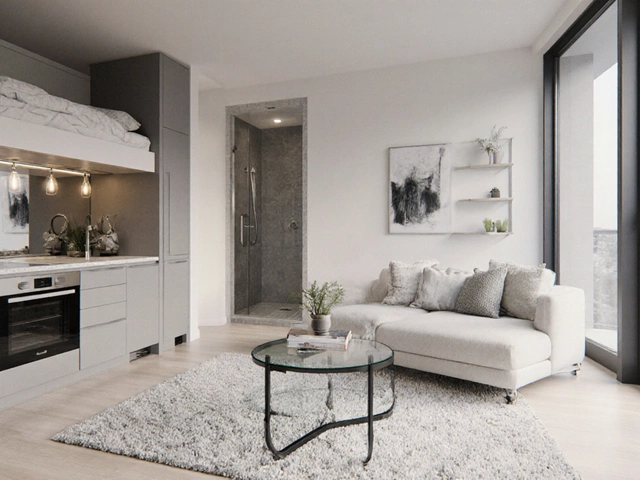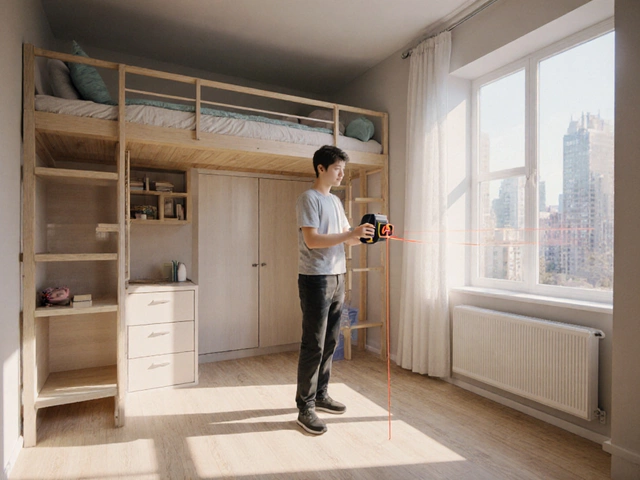How Accurate are Zillow Estimates to Real Home Selling Prices?

Have you ever scrolled Zillow and felt your heart drop—or maybe leap—at the Zestimate on your home or dream house? That instant number has this strange power. People will fight over whether it’s a blessing or a prank, but either way, it’s out there: big, bold, and wildly convincing. But how much should you trust it when the chips are down and you're getting ready to buy or sell?
What Goes into a Zestimate?
First things first: Zillow’s Zestimate isn’t a magic eight ball or a mysterious black box. It’s built by an army of algorithms chewing on a mountain of data. We’re talking about everything from recent local sales, property taxes, square footage, and what features your place has (or doesn’t). You’ve got bedroom counts, year built, amenities like a pool or hardwood floors, neighborhood comps—all feeding the machine. And yes, it adjusts constantly: sometimes sucking up new listing photos or Zillow users’ corrections to keep things fresh.
According to Zillow, as of early 2024, their national median error rate for on-market homes sits at around 2.4%. That means if a house is listed at $400,000, the Zestimate could be off by about $9,600 either way. But the picture shifts when a house isn’t on the market yet—the median error rate for off-market homes is higher, at about 7.5%. Now you’re looking at a possible swing of $30,000 for the same $400,000 house. Ouch.
Zillow’s own website breaks it down even more. Error rates can shrink or spike depending on where you live. In hot city markets like Seattle, Portland, or LA, the data tends to be richer, which means the algorithm has better food to feed on. In rural or small-town spots where home sales are rare, or public records updates lag, the system has to guess—and the guesses can be wild. You’ll even see differences inside one city, with older neighborhoods packed with unique homes often showing bigger swings compared to cookie-cutter subdivisions.
Real-Life Price Comparisons: When the Zestimate Hits, and When It Misses
Here’s where things get less digital and more personal. I’ve watched friends check Zestimates before making offers, and I’ve seen them walk away from homes convinced the number must be gospel. Just in the past year, a neighbor listed her mid-century ranch for $550,000—dead on what Zillow said. It closed for $547,500. Not bad. But three blocks away, a similar-sized house was estimated at $510,000, listed for $485,000, and went under contract for $505,000 after a fierce bidding war. Was the Zestimate “off”? Maybe. But it wasn’t wrong about one thing: demand is fickle, and actual buyers decide what’s real.
The National Association of Realtors ran a study in late 2023, comparing Zestimates to closed sale prices across 25 major metro areas. They found that in big metros in California, Zestimates came within 5% of the final price for about 70% of listings. Out in the Midwest or less-populated counties, the ‘within 5%’ accuracy dropped to just over 50%. And there were still places where wild swings—think 15% or 20% off—happened in both directions. Sometimes sellers get so starry-eyed over a high Zestimate they set their price too high and sit idle for weeks. Other times, buyers count on the Zestimate as leverage, asking for a discount if the asking price beats Zillow by too much. But any smart agent will tell you: the Zestimate isn’t a guarantee or appraisal, it’s a starting point. And the more unique the home, the less you want to bet your equity on an algorithm.
One trick I’ve seen work: if you’re serious about selling, update your home’s details on Zillow directly. New photos, accurate upgrades, even a fresh description—these can sometimes nudge the Zestimate a little closer to reality, simply by giving the algorithm more data to chew on. Of course, nothing beats a skilled agent plugging into the local scene or a professional appraisal for true precision.

Why Do Zestimates Get it Wrong?
Imagine you’re in a neighborhood where two identical houses sit side by side. One is missing a roof and smells like wet dogs, the other just got a kitchen straight out of Architectural Digest—marble and all. Zillow’s model, unless it gets those details or new listing photos, may think they’re twins when the dollar gap between them is massive. Sometimes whole blocks see home values shift because of subtle changes you wouldn’t spot from county records, like a new school district boundary or a spurt in local job growth. These are things the Zestimate doesn’t always “see” right away.
Zillow’s model digests boatloads of data, but if you’re in an area where public records update slowly, or there’s a lot of variance in the housing stock, the algorithm gets nervous. Older towns with crazy architecture, one-off renovations, or places where homes rarely change hands: these are all Zestimate kryptonite. The error isn’t about incompetence—it’s just the reality of models relying on averages and math, instead of walking the halls and sniff-testing the basement after the last rainstorm. I remember when my friend Holly checked the Zestimate on her late aunt’s home—a charming mess in a quirky part of town—and laughed out loud. There was no way a math formula could account for the purple kitchen, sloped floors, or the fact that all the other houses nearby had big finished basements.
Tips for catching where a Zestimate might flub include comparing it to recent true sales (not listings) of homes with nearly identical features, year built, and square footage. Ignore wild card listings—like a house sold under duress or another with a weird, out-of-place price. Dig a little into your county assessor’s records if you want backup. If your house is one-of-a-kind, or your town is sleepy, don’t count on that Zestimate being your golden ticket.
How to Really Use Zillow When Buying or Selling
If you take one thing away, it’s this: treat the Zestimate as a weather forecast, not the gospel. It’s a helpful barometer, a guide, but it’s not your only tool. If you’re selling, don’t cheap out on a strong real estate agent. A good agent knows the intangibles: which homes got snapped up by out-of-town buyers, how appraisers are thinking, and exactly which new upgrades buyers are drooling over. And if you’re buying, use the Zestimate as just one check among many. Look at true sales, grab a free market analysis, and stalk the MLS for patterns. If a home’s Zestimate is off by a mile compared to similar sold homes, there’s usually a reason. Maybe the public records are behind, or maybe Zillow just can’t see through those 1990s-era shaky cam listing photos.
Want to give the algorithm a hand? Log in and “claim” your home on Zillow. Fill in missing features, add recent upgrades, and upload good photos—the system will often snap to attention and tweak the Zestimate up (or down, if you’ve skimped on maintenance). Don’t try to game it by making stuff up; Zillow has checks, and it could backfire big. Instead, be specific and accurate. Sometimes even small changes—like noting you have a finished walk-out basement and not a garden-level, or that your garage is heated—can nudge the number in your favor.
Don’t fall for Zestimate wars. At the end of the day, buyers still walk through, sniff around, and compare what they see to their stack of options. Human decision-making still dwarfs any algorithm. So, trust the data, but don’t marry it. If your agent says the right listing price feels higher or lower than your Zestimate, ask for proof. Look for a list of most recent, similar sales—especially those that closed, not just what was on the market. Dig into the details. Be honest about your home’s quirks. Ultimately, the final sale price comes down to where the buyers and sellers are willing to meet—not just what a computer says.









Write a comment